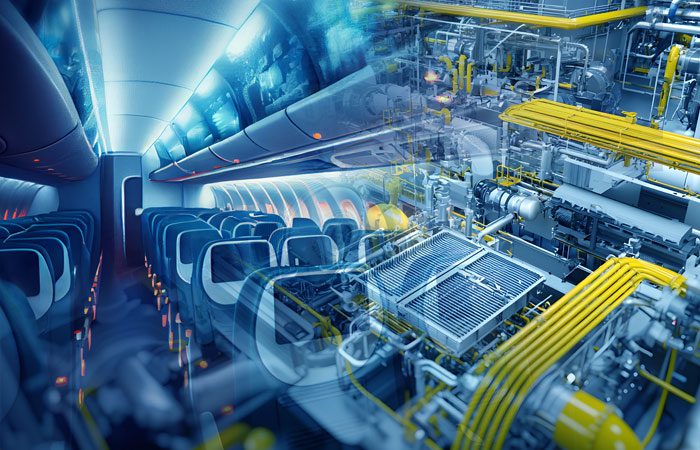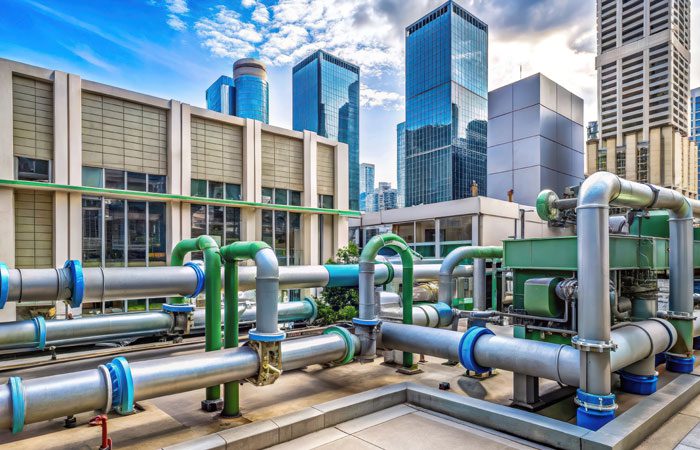
From FEED to First Product: How Integrated Project Delivery Redefines Plant Engineering
For years, capital projects in oil & gas, chemicals, power, and utilities have struggled with a familiar trio of problems: cost overruns, schedule slippage, and designs that look good on paper but underperform in the field. A big part of the root cause lies in how projects are structured—fragmented handovers between concept, FEED, detailed engineering, procurement, construction, and commissioning.
Front-End Engineering Design (FEED) was meant to address this by freezing scope, de-risking major decisions, and giving owners a realistic view of CAPEX and OPEX before committing. But in many organizations, FEED is still treated as a standalone package, executed in isolation from the people who will later engineer, construct, operate, and maintain the plant.
That’s where Integrated Project Delivery (IPD)–based FEED support can be a game changer.
Instead of viewing FEED as a static document set, an IPD approach turns it into a dynamic, collaborative framework that aligns owners, engineering partners, EPC/EPCM contractors, and operators around shared outcomes—from safety and throughput to energy efficiency and lifecycle value.
Know more below.
Why FEED Is the Strategic Control Point in Plant Engineering
In complex process plants, 70–80% of lifecycle costs are effectively “locked in” by decisions taken before detailed engineering begins. Equipment sizing, process configuration, layout, materials, and utilities philosophy all originate at FEED level. If these choices are made without integrated input, owners pay the price later—in rework, change orders, and hidden operating penalties.
A robust FEED should therefore do more than produce PFDs, P&IDs, and preliminary layouts. It should:
- Test multiple process and layout scenarios against business objectives
- Quantify CAPEX, OPEX, and schedule implications early
- Embed safety, maintainability, and reliability into the baseline concept
- Anticipate constructability, modularization, and phasing strategies
- Align stakeholders on clear performance targets and risk allocation
But achieving this requires a delivery model that breaks down silos. That’s exactly what IPD is designed to do.
Integrated Project Delivery: Moving from Transactional to Collaborative
Traditional project delivery models treat each stage—and often each participant—as a separate commercial island. Design is “completed” and then thrown over the wall to construction; construction issues bounce back as RFIs and change requests; operations discover maintainability gaps only when the plant is live.
Integrated Project Delivery turns that paradigm on its head by:
- Bringing owner, engineering partner, and (where possible) EPC/EPCM and key vendors into the FEED room
- Creating shared visibility into risks, constraints, and trade-offs
- Linking commercial incentives to collective project outcomes rather than isolated milestones
- Using common digital platforms and models to maintain a single source of truth
In practical terms, an IPD-oriented FEED support model ensures that:
- Process engineers understand constructability and modularization implications
- Layout engineers design with access, maintainability, and safety in mind—validated by operations and HSE teams
- Electrical/Instrumentation disciplines are aligned with automation, cybersecurity, and future digitalization plans
- Cost and schedule analysts continuously challenge the design with real-world benchmarks
The outcome is not just a FEED package—it’s a project blueprint that can be executed with confidence.
How TAAL Tech Applies IPD Principles to Early-Stage Plant Engineering
TAAL Tech is not a traditional “FEED house” today. Instead, we act as a plant engineering partner whose established capabilities in mechanical, piping, electrical, instrumentation, process, and digital plant modeling are increasingly being pulled earlier into projects to influence FEED quality.
Our emerging approach to FEED-aligned support for greenfield and brownfield plants is built around four pillars: integrated teams, model-centric engineering, risk-based decision-making, and lifecycle thinking.
- Integrated, Multidisciplinary Squads
Rather than running early-stage engineering as a linear, discipline-by-discipline exercise, we assemble integrated squads comprising:
- Process and utility engineers
- Mechanical, piping, and layout specialists
- Civil & structural engineers (via partners where required)
- Electrical, instrumentation, and control engineers
- Safety, HAZOP/LOPA, and reliability specialists
- Digital / Plant 3D / BIM and data management leads
- Costing and planning engineers
These teams work in close collaboration with the owner’s SMEs, EPC/EPCM partners (where nominated), and sometimes key OEMs. Workshops are structured around scenarios rather than documents—“What happens to energy intensity if we change the process route?” or “How does modularization affect schedule, crane strategy, and site logistics?”
As customers invite us earlier into the project lifecycle, this same model can naturally extend into formal FEED engagements.
- Model-Centric Baselines: From 2D to Data-Rich Plants
We treat early engineering and pre-FEED/FEED-like scopes not as stacks of 2D deliverables, but as the first, foundational version of a digital plant. Drawing on our strengths in plant 3D modeling and digital twins, we build:
- 3D plant models for critical units and high-congestion areas—even at conceptual or FEED stage
- Intelligent P&IDs with tagged equipment, line lists, and control philosophies embedded
- Early clash risk identification in high-risk zones (e.g., pipe racks, compressor buildings, cable corridors)
- Layout reviews using 3D walk-throughs, enabling owner and O&M teams to “experience” the plant before steel is cut
This model-centric strategy drastically improves the quality of input handed over to detailed engineering and construction, reducing ambiguity and interpretation gaps—whether TAAL Tech is engaged formally at FEED or at the detailed engineering stage.
- Risk-Based Decisions with Clear Trade-Offs
Every early-stage design decision has FEED-level implications: capex vs opex, schedule vs flexibility, standardization vs customization. In our work with owners and EPC/EPCM partners, we structure these trade-offs to make them explicit and quantifiable.
Typical activities include:
- Options studies (e.g., alternative process routes or utility concepts) with ranked evaluation matrices
- Sensitivity analysis on throughput, energy consumption, and raw material variability
- Constructability and modularization assessments that feed directly into schedule and logistics planning
- Early HAZID / HAZOP workshops to ensure safety isn’t an afterthought
- Reliability-centered thinking in equipment selection and redundancy philosophy
As our collaborations move further upstream, the same methods help strengthen formal FEED packages, ensuring major decisions are traceable back to structured evaluation rather than intuition or schedule pressure.
- Lifecycle-Centric Scope Definition
Owners today are not just buying a plant; they are buying lifecycle performance. Our engineering support—whether at concept, FEED-adjacent, or detailed stages—explicitly addresses:
- Predictive maintenance readiness (instrumentation strategy, data capture points, future digital twin enablement)
- Operability and staffing assumptions (control room design, ergonomics, alarm management philosophy)
- Energy and water footprints, along with decarbonization and future fuel-switch options
- Integration with existing assets for brownfield or expansion projects—across utilities, tie-ins, control systems, and safety systems
By embedding these considerations early, we help owners avoid costly retrofits and unlock better OEE and sustainability performance from day one.
Where Integrated FEED Support Adds the Most Value
Not every project needs the same depth of FEED. But IPD-aligned FEED support and FEED-adjacent engineering can be particularly powerful when:
- Project risk is high – technologically complex processes, tight schedules, constrained sites, or aggressive performance targets
- There are multiple stakeholders – JV partners, licensors, OEMs, and operators with overlapping mandates
- Brownfield integration is critical – tie-ins to aging assets, live plant constraints, and phased cut-over plans
- Sustainability and energy transition are in focus – low-carbon fuels, hydrogen readiness, waste-heat recovery, and electrification strategies
In such cases, the cost of a deeper, more integrated FEED is often recovered many times over through reduced change orders, fewer redesign cycles, and smoother construction and commissioning.
TAAL Tech’s Role as a Plant Engineering Partner, Evolving into FEED Collaboration
The true test of FEED quality is not how polished the documents look, but how reliably the project moves from concept to commissioning.
TAAL Tech positions itself not as a traditional standalone FEED vendor, but as an engineering partner whose current strengths lie in:
- Mechanical design
- Piping engineering
- Electrical engineering
- Instrumentation & control
- Process engineering
- Plant 3D modeling & digital twin
- Modularization / skid engineering
- Procurement engineering support
- Construction-driven engineering
- BoM, QTO & costing
- Digital engineering
- Reverse engineering
These capabilities allow us to:
- Support owners from early concept and feasibility into detailed engineering, with the ability to contribute to FEED where our scope is relevant
- Work alongside EPC/EPCM contractors to address design queries quickly and coherently
- Provide digital plant models and data structures that can evolve into operations and maintenance platforms
- Help clients standardize engineering templates and best practices across their asset base, creating a natural foundation for more integrated FEED models over time
Because our teams work across multiple industries—oil & gas, chemicals, specialty manufacturing, utilities—we bring cross-sector insights into each engagement, whether it’s modularization strategies, constructability lessons learnt, or digitalization patterns that have worked elsewhere.
FEED + IPD: A Direction for Future-Ready Plants
Plant owners are under pressure to deliver more with less—shorter schedules, leaner CAPEX, stricter safety and environmental expectations, and increasingly volatile markets.
In that context, FEED is too important to be treated as a checkbox. When FEED is executed through an Integrated Project Delivery lens, it becomes a strategic tool: aligning stakeholders, clarifying risk, de-bottlenecking execution, and hardwiring lifecycle performance into the very DNA of the plant.
For TAAL Tech, this is a clear direction of travel: using our existing strengths in multidisciplinary plant engineering and digital models to support owners earlier in the lifecycle, and progressively co-develop IPD-aligned FEED frameworks with them.
From first sketch to first product, our goal is to help you move with greater confidence, fewer surprises, and a plant that is genuinely ready for the future—whether we are engaged at FEED, detailed engineering, or anywhere in between.


